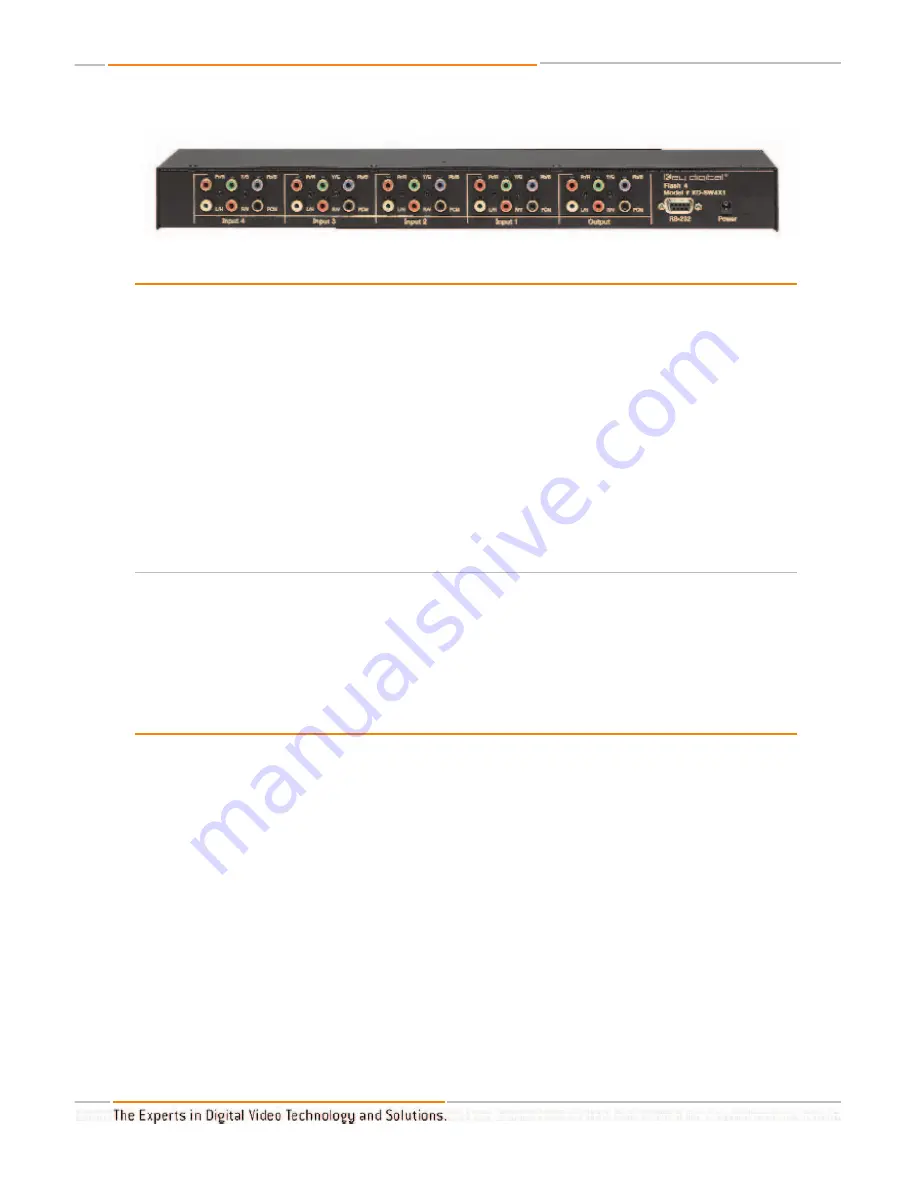
Using the Flash 4
TM
, you can switch the virtaully any A/V input device
•
DVD players
•
Electronic game boxes
•
Cable TV, satellite, and terrestrial DTV set-top receivers
•
Digital video recorders (DVRs)
•
D-VHS, S-VHS, and VHS VCRs
You can also switch S-Video (with adapter) and composite (single-wire) video signals from
VCRs, digital video recorders, and satellite set-top receivers through the Flash 4
TM
.
Color-coded RCA jacks are provided on the rear panel for fast and easy hook-up.
Switching can be done in any of three ways:
•
Manually, using the front panel button.
•
Remotely, using the supplied infrared remote control
•
Remotely, using a touch panel and RS-232 commands
Connecting Your A/V Equipment
Connecting your A/V equipment to the Flash 4
TM
is a simple process. Start with Input #1 and
proceed to the next higher input each time you add an A/V device.
First, determine the video signal format you want to connect. If an A/V device has compo-
nent YPrPb (three-wire) video outputs, use them for best video quality. If component video
outputs are not available, use the S-Video output instead. Composite video signals can also
be switched through the Flash 4
TM
, but these signals will have the lowest overall video quality.
This is comparative statement for Component, S-Video or Composite formats. The Flash 4
TM
does not degrade any HDTV or SDTV video signal.
Next, determine whether you want to use the device’s analog audio outputs or the digital
audio output. Use analog outputs if you are switching audio to the analog inputs of a TV or
monitor. Use the digital output if you are switching audio to an A/V receiver with a digital
audio input.
HD Flash 4
TM
Operating Instructions
Page 4 of 12






























